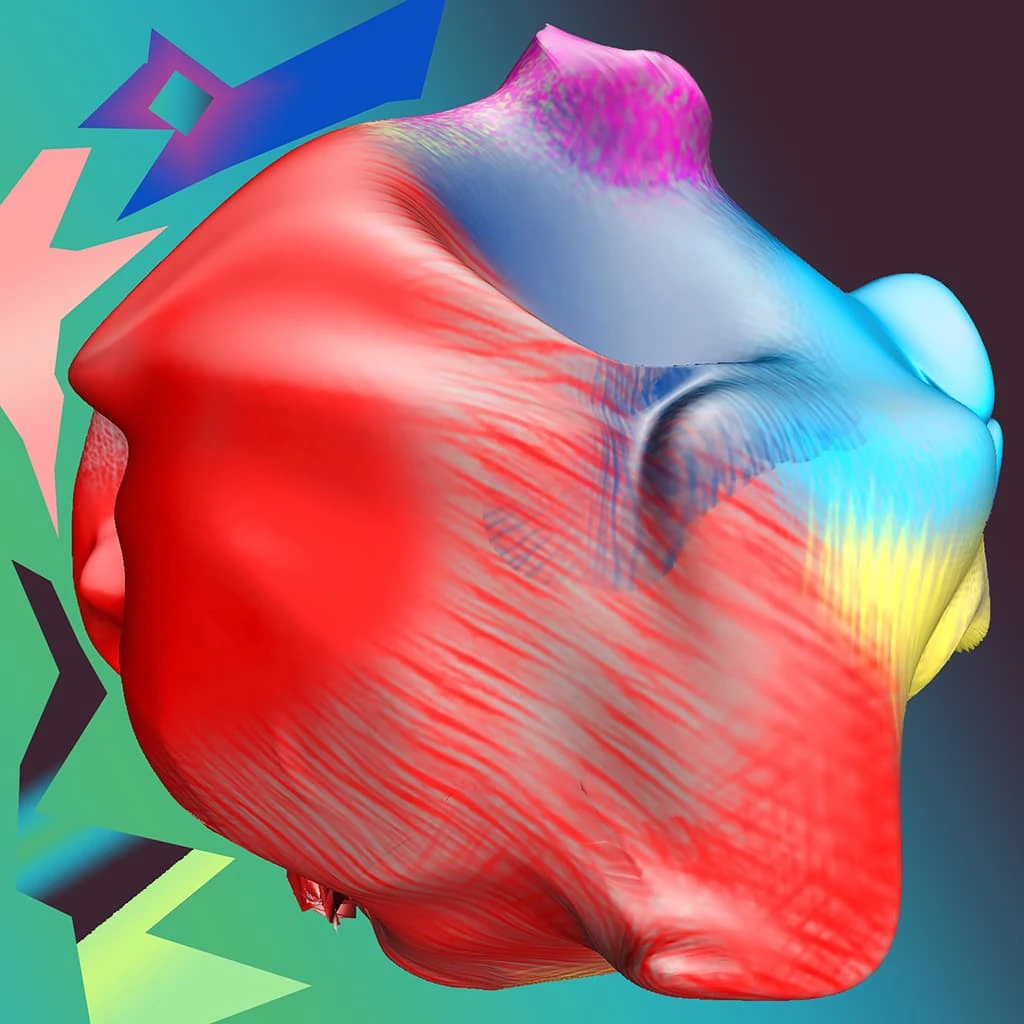
- Date
- 25 MARCH 2024
- Author
- MIRA WANDERLUST
- Image by
- CHIARA PASSA
- Categories
- Interviews
Beyond Reality: Chiara Passa's Artistic Journey into the Virtual
We introduce you to the mesmerizing art of Chiara Passa. Born and based in Rome, her artistic research focuses on immersivity in art, which gained prominence in the mid-90s. She explores the differences in virtual spaces using a range of techniques, technologies, and devices. Through the use of virtual reality and augmented reality, she sees these technologies as artistic mediums that allow her to delve into architecture as a dynamic interface.
Her passion for space and how it is transformed by informatics drives her work. By using VR and AR, she immerses herself in their inherent language and challenges the conventional idea of architecture. Chiara explores the liminal duality between tangible and virtual places, creating a unique oscillation between spaces in her artworks. Chiara’s work encompasses various forms, including 3D animations, net-artworks, interactive and site-specific AR and VR video-sculptures. These sculptures are sometimes made using materials such as Carrara marble, ceramics, fresco technique, plexiglass, or 3D-printed parts. She also utilizes VR medium to create site-specific video installations, often using google cardboards, that involve installing 3D viewers throughout real physical spaces, forming geometric shapes in liminal areas. Spectators can peek through these viewers, immersing themselves in a reconstructed and resized VR space made up of wired geometric angles and futuristic views. Through this, the artist aims to highlight the paradoxical nature of the modernspace-time condition, which is even more diluted between physical and liquid space in today'sworld. In addition to her visual artworks, she has also ventured into internet-art projects.
One notable series is "Extemporary Land Art on GE," an Augmented Reality project created on the GoogleEarth browser. Through this series, she reshapes the virtual environment, transforming it into a vibrant and lively space, challenging the concept of place itself. Her animations and video installations are characterized by a constant study of shape, often focusing on geometric and essential forms. She takes on a three-dimensional and dynamic vision of virtual space. The interactive nature of her video installations creates a new atmosphere for spectators to experience, as they are based on the idea of performance, allowing people to watch and interact with a space that moves beyond its functional purpose. Through herinternet animations, she explores the architecture of the liminal area of the internet interface. She extends the boundary between the inner and outer worlds and creates meta-dimensional interpretations of her artwork. Entering the interface becomes a voyage where synthetic shapes merge with design, structure, architecture, and reality.
Chiara also creates software artworks in the form of apps and widgets. These artworks serve as metaphors for a new imaginary and interactive media, mediating impossible desires between computers and their audience. Her "Object Oriented Software Art" transforms the interface into a living object, challenging the virtual/physical boundary between interface and subsystems. She highlights how the interface itself has become a 'philosophical object' in our everyday lives. To discover more, read below the exclusive interview with Chiara Passa x RED- EYE.
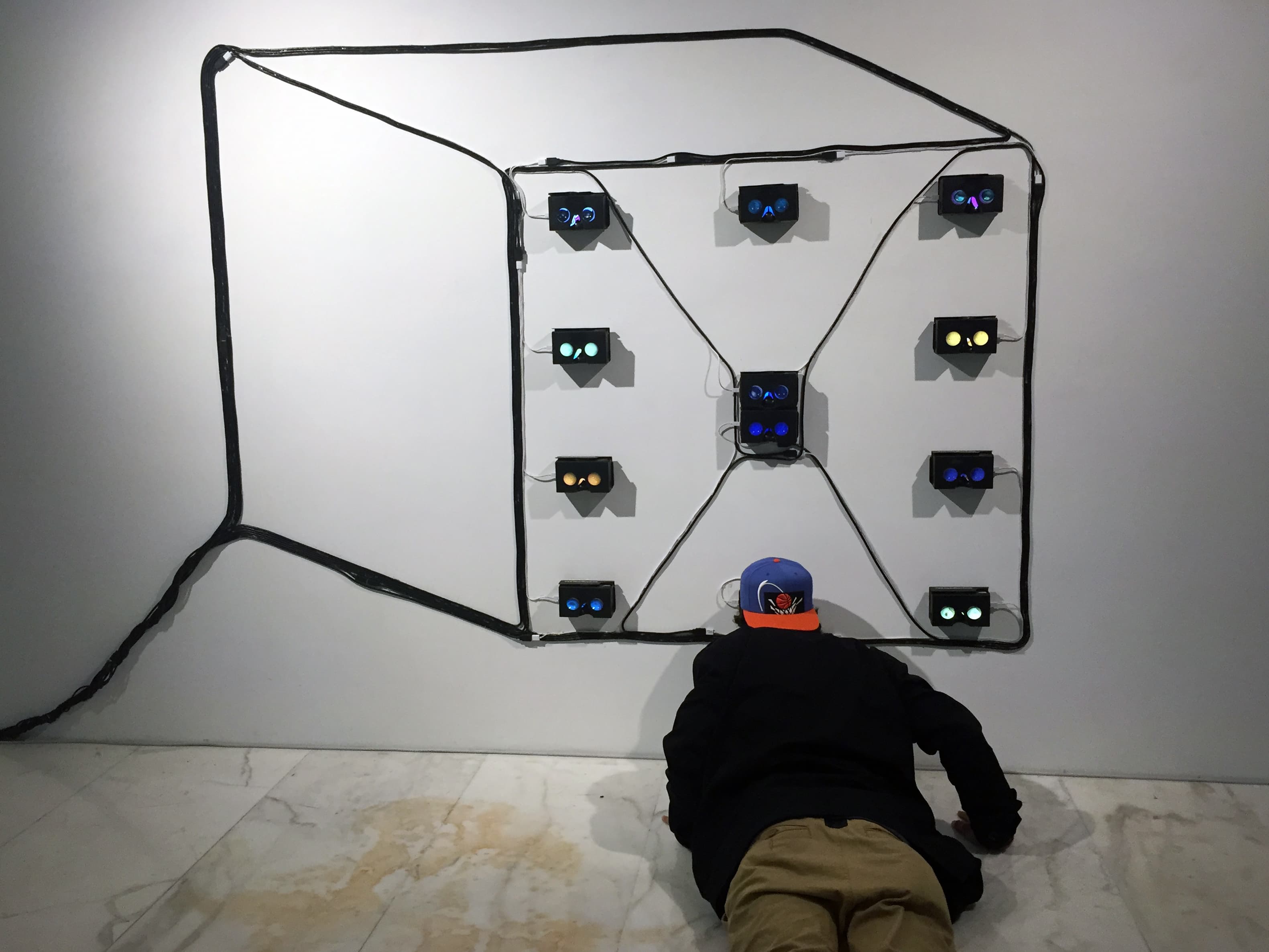
Hello Chiara, welcome to RED EYE, how would you define your childhood in a few words and how it had an impact on your art journey?
Hello RED EYE, I can imagine where this question comes from. I guess it is from the augmented reality series: Extemporary Land Art on Google Earth, where in the artwork The Garden of My Childhood, in Villa Glory I dug up memories and fragments melted with the vibrant ground. I have been breathing art since I was born because my father is an artist too, even if we never lived together. From my wild childhood till now, was a long and hard journey that ended up – not obviously, especially for me – in art. So, I started with digital art in 1996 after visiting the Ars Electronica Festival in Linz, where I acquired a catalogue of pioneers of electronic art.
Can you tell us about your artistic research and how it explores the liminal duality between tangible and virtual spaces?
My artistic research is part of the revival concerning the immersivity in art that began around the mid-nineties. So, at the end of the nineties, I designed virtual reality and augmented reality video-installations and multimedia works with an ‘immersive effect’, using the media of the time that were mostly based on whole-wall Beamer projections, such as The CAVE (Cave Automatic Virtual Environment) and video-mapping. I had to wait many years to see how the various technological experiences in virtual and immersive art are now reconsidered by the art system and are now the subject of several studies and publications. In my virtual artworks, the onlookers become blind and hyper-seeing at the same time. Blind, because they lose any Cartesian coordinate, and hyper-seeing because they can see inside the artwork, being completely immersed and involved in the artwork itself. We are no longer limited to the mere observation of it. In fact, we can hyper-enjoy the artwork by passing through it and penetrating its most intimate place of source. Plus, we can establish an intimate dimension with the artwork itself, being alone but at the same time being surrounded by crowds.
How do you use virtual reality and augmented reality technologies as artistic media to challenge the static notion of architecture?
I use augmented reality to stretch space beyond its limit and virtual reality to penetrate it until its most recondite place of origin, achieving in situ a bizarre oscillation between virtual and real spaces. In my artworks, emerging spaces are interconnected: the imaginary space arranged by virtual effects and the spatial arrangement of the place itself. Spectators are unsettled by this double relationship, having the sensation of remaining suspended between inside and outside. The space opens up to include several dimensions, with time being just one of many that aid people's vision. Spectators walk and move as if they were in so-called ‘reality’, but classical space is bent, expanded, and pierced: the place itself becomes an immersive reality/non-reality to be explored. Multiplication is also created by structures enclosing virtual reality, such as Google Cardboard geometric figures or augmented reality frescoes, further increasing multidimensionality.
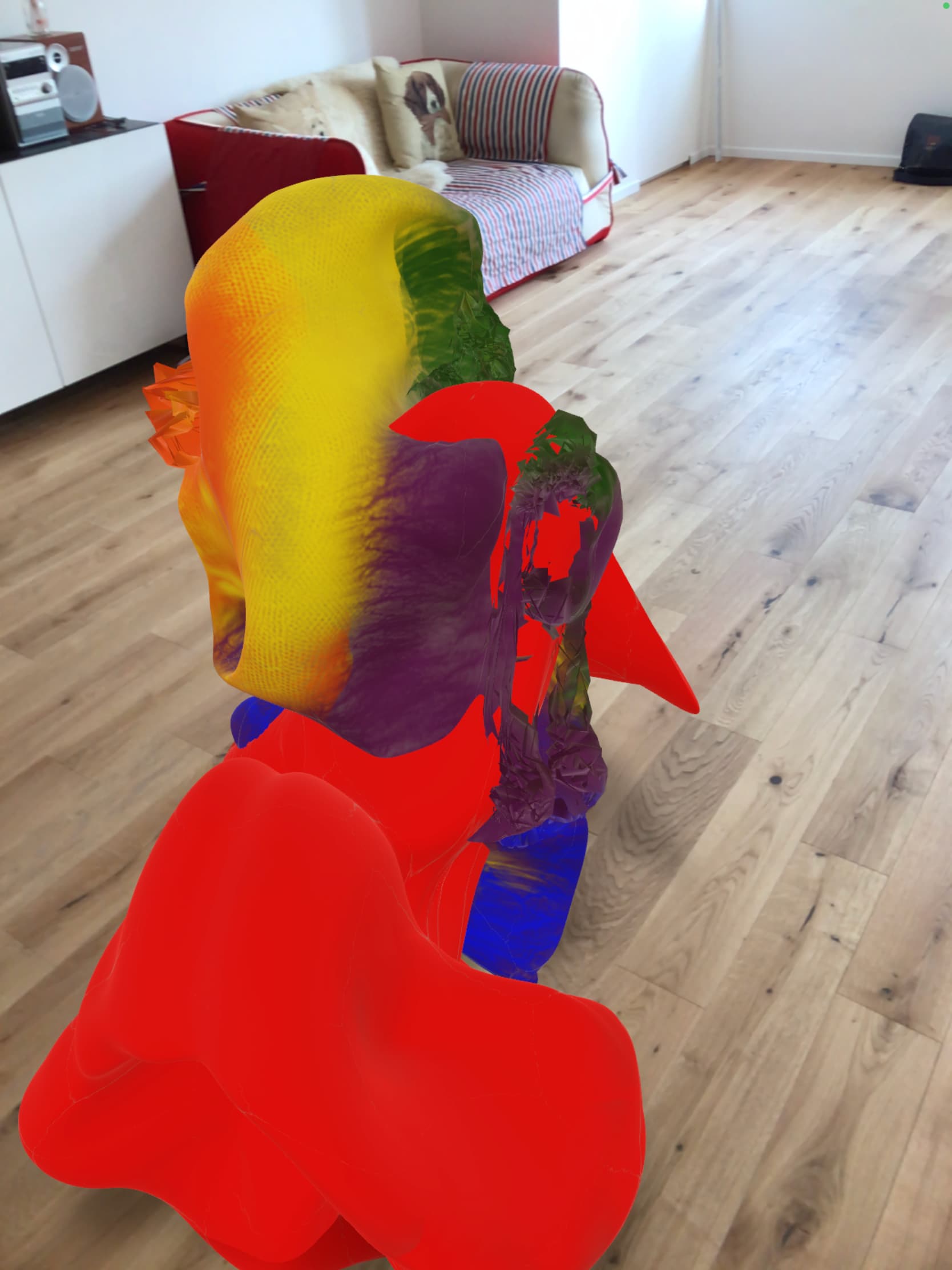
Could you explain how you incorporate different materials, such as Carrara marble, ceramic, and 3D printing parts, into your VR video-sculptures and installations?
I’ve always believed that a sculpture or fresco can have an animated side capable of transforming and expanding into something else, according to speculative realism that thinks of objects as living entities. My artworks are alive. Thus, my marble sculptures can contain a 3D viewer for virtual reality because the sculpture doesn’t end with the contemplation of its shape but continues into virtual reality to expand its surface into a liquid vision. Moreover, other marble sculptures can be interrogated with augmented reality and artificial intelligence to speculate on object recognition practices in AI. Similarly, a fresco can be a matrix for augmented reality, generating an animated canvas. The idea is to let spectators watch and discover beyond the tangible surface to dig into a fluid journey until the heart of the artwork, where matter is vibrant, as much force as object, as much energy as substance, as much passion as extension.
What inspired you to use Google Cardboards in your site-specific video installations, and how do they enhance the viewer's experience?
I definitely love Google Cardboards for their versatility compared to other 3D views. I found a way to let more people together approach virtual reality, which normally can be experienced solitarily. I immediately transformed it into a medium for art, creating immersive installations of up to thirty 3D viewers. In the contamination between physical and virtual space, Inside Geometry – Double Language (2015-ongoing) plays with the idea of double: virtual/tangible. The arrangement of 3D viewers in situ creates forms, from an upside-down eight symbol of infinity to diverse geometric figures, specifically designed for each hosting space. With the complicity of virtual reality, short immersive animations in continuous transformations open up inside the Google Cardboards, each one different from the other. Onlookers are invited to peek through the 3D viewers, over the white wall, to immerse themselves into a reconstructed and resized virtual reality space made of wired geometric angles and futuristic views. Inside Geometry – Double Language highlights the paradox of the modern space-time condition, now even more diluted between physical and liquid space.
How have you explored the intersection between architecture and the internet interface in your internet-animations, extending the boundary between the inner and outer world?
I have always had a deep interest in architectural space and how it can be transformed within computer language. Technology makes it possible to overcome boundaries by imagining presence in an elastic dimension suspended between the real and the immaterial, where it is possible to coexist, make art, and interact on a wide-ranging basis. With the net-artwork Fourth Dimension Banner, conceived as a site-specific for the Arshake online magazine, spectators penetrate the architecture of the liminal area of the interface, a thin film or technological skin that (like natural skin) has surpassed its role as boundary between the inner and outer world. Spectators enter the interface to begin a voyage that is as dreamy as it is real – where worlds open the doors to other worlds and where synthetic shapes become design, structure, architecture, and reality. Fourth Dimension Banner is a virtual window that changes the materiality of built space, adding new apertures that dramatically alter our conception of space and of time.
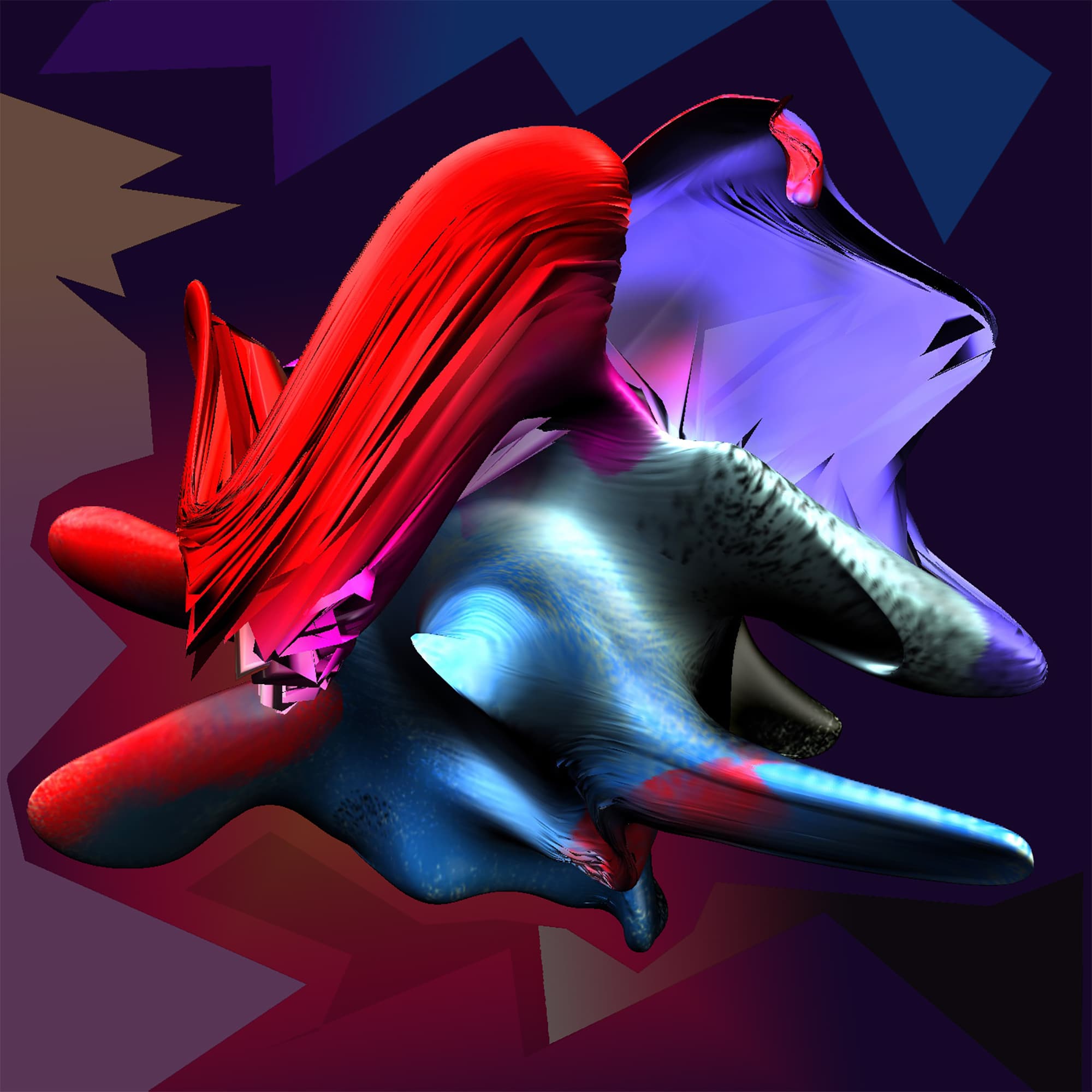
Could you elaborate on your "Object Oriented Software Art" and how it transforms the interface into a live object, challenging the virtual/physical boundary?
All my artistic research deals with the theme of software: from the creation of apps in augmented reality, to immersive and interactive works in virtual reality. The important shift approached with the evolution of technology, especially with object-oriented programming language, a programming paradigm in which a program is seen as a set of objects that interact with each other. I still remember when in 2007, together with the installation disk of the Tiger operating system of my MacBook Pro, I found another disk entitled Apple Developer Tools. Inside there were three software and various frameworks for object-oriented programming to create apps and widgets. The following year (2008), I published my first web-app in the form of a widget, titled: The Widget Art Gallery. In 2009, I launched The Virtual Prigione, my first native IOS software-artwork for the Apple Store. At that point, I had a clear idea of how to develop interaction tactics and software interfaces. Object Oriented Icons artwork displays a living and vibrant desktop interface in the form of icons that, when clicked, generate animated messages under the guise of pop-ups, 3D tags, audio, etc. Each fragmented icon contains a hidden file that holds a surprise to be discovered. Object Oriented Icons digs the interface of our PC in depth to transform it into a performative software containing different subspaces generated inside the ‘vital surface’ of the desktop in order to challenge the boundary between virtual and physical, highlighting how the interface itself is increasingly becoming a philosophical object in our daily lives.
What was the concept behind your conceptual internet-art experiment, "ideasonair - blogging as an art project," and how did it promote the idea of an "open artwork"?
In 2004, after attending a conference on 2.0 blog platforms, I decided to explore the artistic potential of this medium. Inspired by Umberto Eco's concept of the open work, and influenced by Plato’s theory of ideas, I created Ideasonair – Blogging as an Open Art Project. Ideasonair was an open net-artwork created specifically to stimulate artists. Every month, from 2005 to 2012, the blog offered various ideas for the creation of digital works of art. Ideasonair was an artistic and conceptual operation where artworks existed in the pure form of ideas and were disseminated through a networking process, also built on user comments. Over seven years, I generated one hundred and twenty artistic ideas, speculating on spatio-temporal, inclusive, and immersive philosophical theories and concepts. Ideasonair challenged museum and gallery art-criteria by invading cyberspace and by compelling the system to rethink classic categories such as author, work, and form. Two years ago, Ideasonair was turned into a book because it was gradually disappearing from the internet due to rapid technological advancements in the web. The book thus becomes a means of preservation, a self-archive, and an attempt to provide a historical record. Giving an organic format (on paper) to a virtual artwork, to preserve it, on the one hand, brings about the paradox inherent in the idea of the work itself wearing out, and on the other, indicates how the original digital format of the work wore out in less time than it would take for a book to disappear. Therefore, I believed that through emulation on paper, Ideasonair could become a memory object in favor of digital art, within the framework of a conservation strategy rooted in the concept of an open artwork.
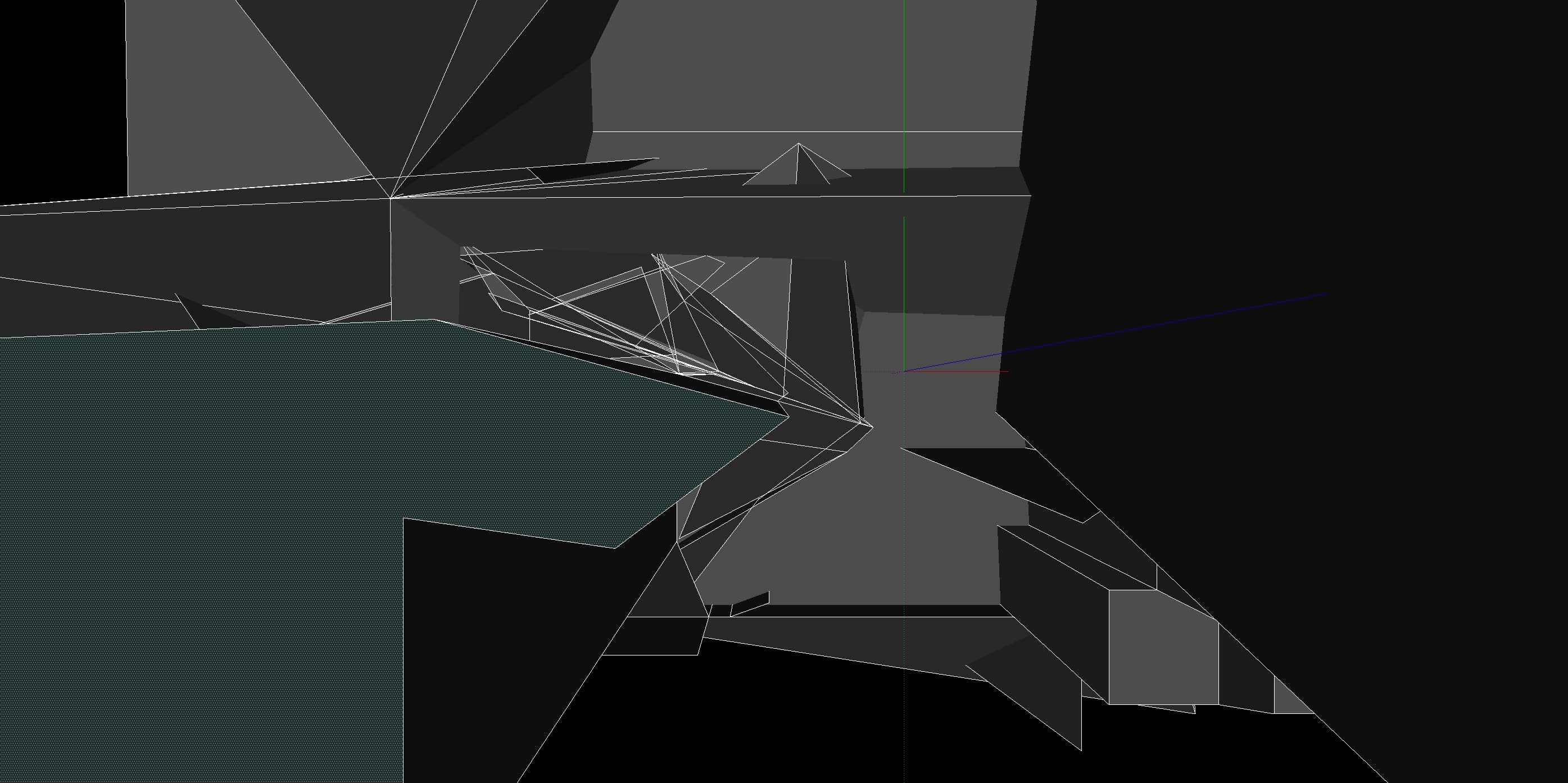
Can you tell us about your latest project, "OBJECT ORIENTED STONES," and how did you approach the research process to create augmented reality abstract artworks and 3D sculptures in AI?
Object Oriented Stones is a series of 3D sculptures viewable through augmented, virtual, and mixed reality. The artwork reveals an alternative and visionary side of stones, transforming them beyond their functionality into something colored and unpredictable. I employed artificial intelligence to shape the stones according to Object Oriented Ontology, using specific real objects from my mother's house, which I converted into a machine learning model.
I am absolutely fascinated by the sculpture medium because it is three-dimensional, like 3D modeling, which I have always used to create my digital works. In the liquid dimension of cyberspace, a fluid sculpture can be as artistically significant as a tangible sculpture. It's about translating the artwork (as I did and explained for Ideasonair), and this path often becomes a constructive challenge. I tackle this by experimenting with the software, materials, and techniques I skillfully combine. Thus, Object Oriented Stones are both tangible and digital art pieces.
How can digital art be a healing process for human minds?
I'm not sure we can be healed from anything at this point. But I believe digital art is a space for construction and creativity, as well as an opportunity to design-using immersive technologies-something that does not exist. In fact, the beauty of art is that there are no limits, just like in virtual worlds. I believe that in the future we will be more and more immersed and that the 3D viewer,augmented glasses, will most likely be our next psychotechnology (to use De Kerckhove words),impossible not to wear
A letter to your future self.
Dear Future-me,
After passing, I hope you’ve been transformed into an immersive software artwork existing within the ethereal realm of cyberspace that transcends boundaries and limitations of human existence by becoming an entity beyond the conventional limits of life and death. This aligns with the ObjectOriented Ontology perspective on objects undergoing transformations beyond their functional utility.I imagine yourself as an embodiment of creativity, interwoven with virtual/mixed reality, code, color,artificial intelligence and interactivity, existing in a realm where imagination knows no bounds.
As this transformation may be not the definitive nor the original, I hope that it inspires, challenges,and invites who will work with you to an artistic odyssey of exploration. I imagine yourself as an experience-an artistic journey that envelops individuals in a world where reality and imagination multiplication and fuse, where every interaction sparks curiosity and wonder. You aspire to resonate with those who engage with you, offering a panorama for dreams, a sanctuary for creativity, and a catalyst for boundless possibilities in art.In this vision, you carry with you the essence of artistic expression, the fervor of innovation, and the resilience to adapt in an ever-evolving digital landscape.May the path to becoming this immersive software artwork be filled with creativity, discovery,growth, and the solid pursuit of artistic excellence.With artistic determination,
Chiara Passa
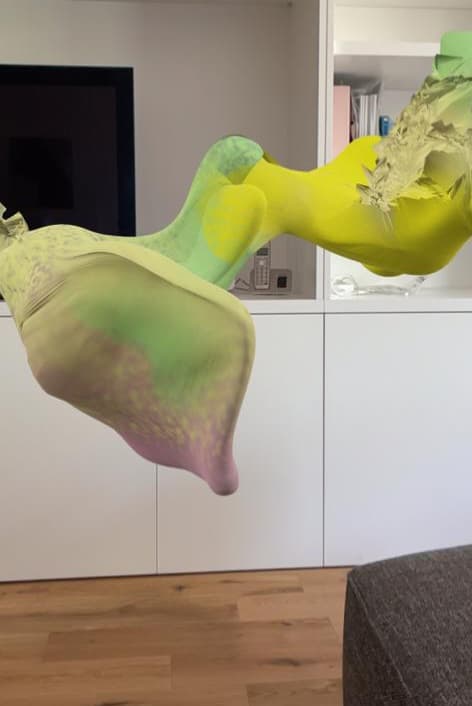
Interview by @mirawanderlust
Images courtesy of @chiarapassa